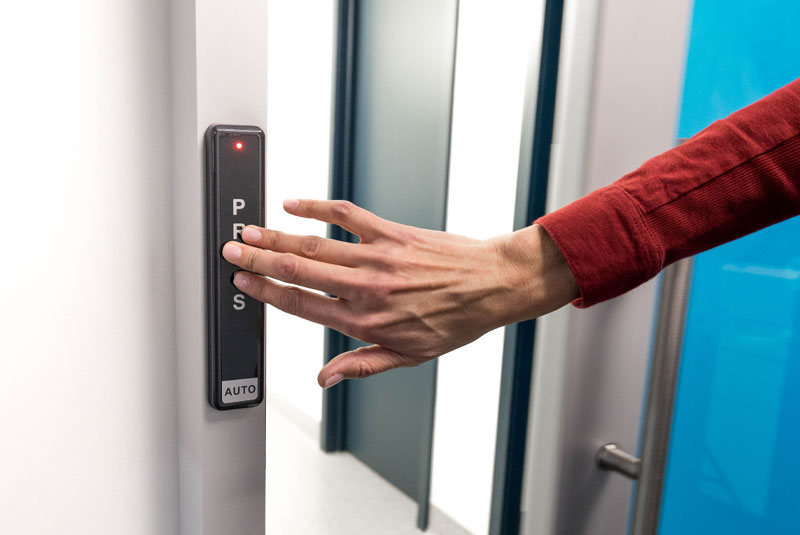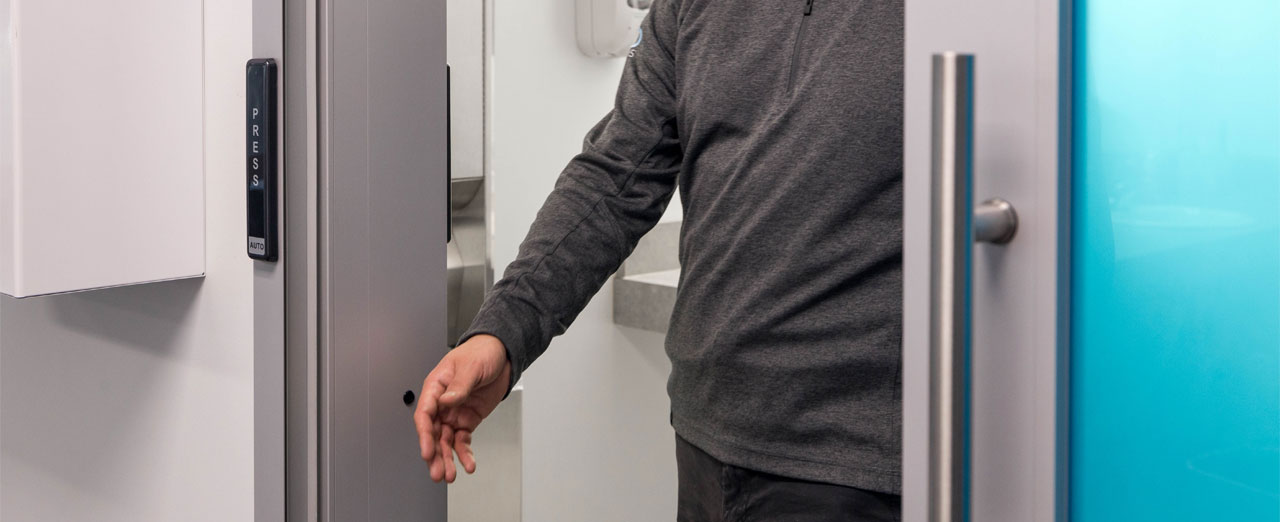
While not required by model building codes, interior automatic sliding doors can help the built environment meet accessibility standards listed in the Americans with Disabilities Act (ADA), reduce touch points for improved building hygiene and support access control goals in medication rooms and other sensitive areas.
Understanding common applications and the options available for automatic sliding doors can support designers as they optimize the use of these systems to provide tangible value to the end-user.
What are the applications of interior automatic sliding doors?
Interior automatic sliding doors can be installed throughout commercial and institutional projects. However, there are some low-traffic applications that may see an increase in functionality from the use of these door systems.
For instance, supply closets and other rooms that house sensitive materials may benefit from an interior automatic sliding door. This is because systems like AutoMotion™ from AD Systems are compatible with credential systems that can be programmed to limit access. Likewise, as improving physical- and cyber-security become increasingly important, interior automatic sliding doors can support enhanced access control for server rooms in commercial settings as well as in select areas of data centers and other industrial buildings. Finally, designers can plan for increased building hygiene by using automatic sliding doors to reduce touchpoints in restroom entrances.
Because these sliding door systems offer similar benefits as their manually operated counterparts in terms of flexibility and accessibility, these systems can provide space-efficient openings in multiple locations. However, it is important for specifiers to understand the options available so they can choose the right system for an application.
What types of interior automatic sliding doors are available?
In general, interior automatic sliding doors are available in two categories: high-energy and low-energy systems. Because they can open and close quickly, high-energy operator automatic doors are typically used in entrances and high traffic areas. They can readily accommodate the movements of groups of people, making them ideal for these locations.
Low-energy operator doors operate with less force and are often initiated through a knowing act—such as a push of a button, slide of a keycard or a wave of the hand. This type of interior automatic sliding door can be specified with low-noise operators to improve functionality throughout the built environment. Because they often require a knowing act, low-energy automatic sliding doors can be fitted with activation devices that are compatible with larger access control systems for enhanced security.
What access controls can interior automatic sliding doors incorporate?
In areas where the main goal is to facilitate more accessible operation, interior automatic sliding doors can be specified with touchless actuators. However, these are not the only options. Automatic sliding door systems can incorporate push button or remote-control operation.
For applications that prioritize enhanced security, interior automatic sliding doors can include function keypads, keycard and other access credential systems. Likewise, these door systems may be able to be integrated within larger security systems to monitor which credentials are used and when for a greater ability to monitor who has access to potentially sensitive materials.
Interior automatic sliding doors go beyond accessibility
Interior automatic sliding doors can help designers and specifiers more readily meet accessibility requirements by sidelining maximum operating force requirements. That said, the value and benefits these door systems can provide a project extended beyond accessibility.
Whether the goal is to reduce touchpoints for improved building hygiene or to enhance security through access control, interior automatic sliding doors represent a viable solution within commercial settings. Further, because select systems are available with low-noise operators, they can be used in several areas without negatively impacting occupant experience.







